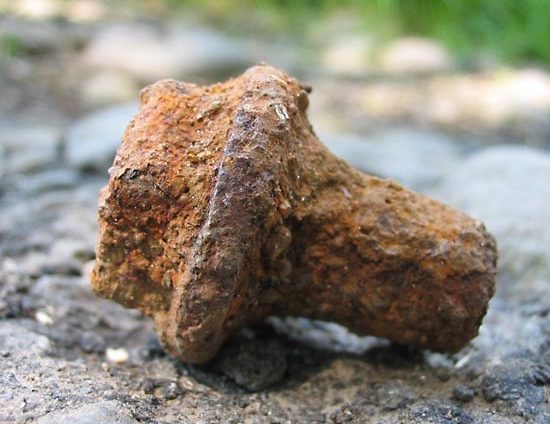The destruction or deterioration of a material through reaction with its environment.
EXPRESSIONS FOR CORROSION RATE
The metric expression for uniform corrosion penetration of a material’s surface is in microns(micrometres or μm) per year for most corrosion rates, although millimetres per year may berequired to express rapid corrosion rates. The imperial measurement is expressed in mils(thousandths of an inch) per year (mpy) and is commonly found in many corrosion books and literature from the USA.
Where corrosion penetration is assumed to be uniform, the corrosion rate can be calculated by the mass of metal lost over time. In most instances, corrosion cannot be assumed to be uniform across a surface.
THE CORROSION PROCESS
The initiation of corrosion requires a site upon a surface of difference in electrical potential (resulting in movement of ions) and an electrolyte, or a potential difference between joined dissimilar metals, or a chemical reaction occurring upon a surface.
Electrolytic corrosion of a metal involves oxidisation of that metal’s surface via an electrical current. This electrolytic cell requires an anode, a cathode and an electrolyte.
THE ANODE
An anode is the site at which electrons are produced resulting in corrosion of the metal surface – the site of oxidation.
Using zinc as an example, we could show this reaction as: Zinc = Zinc ions + electrons
Or in chemical symbols:
Zn = Zn++ + 2e-
Another example of an anodic reaction is iron:
Fe = Fe++ + 2e-
THE CATHODE
A cathode is the site at which electrons are accepted – the site of reduction.
Using the example of unprotected copper in a humid environment (the electrolyte), hydroxyl
ions will be produced at the cathode which can be shown as:
Oxygen + Water + electrons = Hydroxyl ions
Or in chemical terms as:
½ O2 + H2O + 2e- = 2OH
Another example of a cathodic reaction is:
2H+ + 2e- = H2
These two cathodic reactions are by far the most common, although many others are possible. In a corrosion reaction, the anodic reaction is always the metal dissolving to form metal ions.
THE ELECTROLYTE
An electrolyte may be a liquid or gas or granular solid such as soil or sand. A salt solution provides a clear example of an electrolyte. Salt solutions contain positively and negatively charged ions and will conduct electricity.
In the presence of an electrolyte, the anode corrodes, producing positively charged ions which flow into the electrolyte. At the cathode, positively charged ions take up the electrons flowing in the electrical circuit. In our example, oxygen and water take up the electrons to produce hydroxyl ions. The flow of ions in the electrolyte completes the electrical circuit.
GALVANIC CORROSION
Metals can be characterised by their tendency to corrode using the galvanic series, which is a scale of electrode potential. The most noble metals (such as gold and graphite) are least active (passive), and metals such as zinc and magnesium are the most active and likely to corrode. Galvanic corrosion occurs when two or more dissimilar metals are joined. The galvanic series
can predict which metal will corrode first – the active acting as the anode, corroding preferentially to the passive (the cathode). The closer the metals are to each other in the galvanic series, the less galvanic corrosion will occur when the two materials are used in combination.
